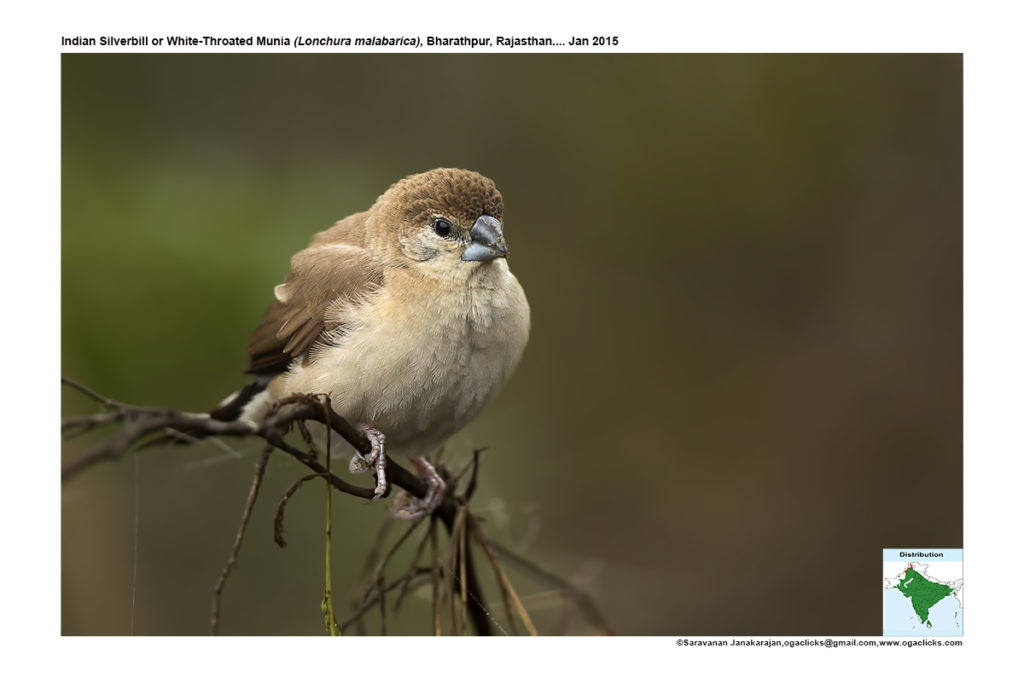
Indian Silver Bill Euodice malabarica
Etymology:
- Euodice : Greek word eu- good; odikos – musical, singing.
- Malabarica : From Malabar reigon in India
Vernacular Names: Hindi: Charchara, Charga, Charakka, Pidda, Pun: Chittgali munia, Ben: Piduri, Sar munia, Guj: Pavai munia, Munia, Tapushiyu, Sweth kanth tapushiyu, Mar: Malmunia, Pandhrya Kanthachi Manoli, Ta: Nellu-kuruvi, Te: Jinuwayi, Mal: Vayalatta, Kan: Bili kantada munia, Sinh: Wee-kurulla
Distribution in India: Widespread resident except North East of India.
Description: Size of 11 cm; wt. of 10–14 g. Male is dull brown above, crown scaly, lower back to rump and uppertail-coverts white, outer webs of longest uppertail-coverts contrastingly black, outer and central remiges and outer greater coverts blackish, rest of wing drab brown with very faint or no barring, long, pointed tail blackish-brown variably tinged chestnut or dull reddish-brown; loral area and narrow supercilium whitish, cheek and throat white, breast to belly and undertail-coverts whitish, flanks light buff with rufous barring; iris dark brown, eyering dark grey; upper mandible dark grey to blackish, lower mandible pale blue-grey; legs grey. Female is similar to male, but lores, face and breast dingier, more buff, supercilium less prominent, flanks less distinctly barred, pointed tail feathers shorter. Juvenile is similar to adult, but rump and undertail-coverts mottled brown, central rectrices shorter and slightly rounded, flanks unbarred, bill grey.
Habitat: It is found in open country, semi-desert and scrub, open dry woodland, cultivated areas, and towns and villages. It ids found from plains and hills 1200 m.
Food habits: It eats grass seeds, rice and cultivated millet, small insects, and nectar. It ground, eating fallen seeds, and regularly seeds from heads of growing grasses. It is highly social, usually in large or small flocks.
Breeding habits: They breed in throughout year, varying locally, generally beginning with onset of rains; mainly in winter months in Indian Subcontinent and Mar–Jun in Israel. The courting male stretches upright and sings and twists towards female, then grasps a stem of grass by one end, flies to her and drops stem, sleeks feathers, body erect with tail pointed down, and jerks head up and down several times; he leans forward, body oblique to horizontal, erects belly feathers, points tail towards her, and jerks head up and down, and he bobs up and down, stretching and bending legs, as he sings. The male brings nest material and female builds nest. The nest is an untidy globular mass with entrance hole at one side, made with twigs, straw and grass, lined with feathers, placed above ground in dead thorn bush, small tree, date palm or thatched roof. They often take over old nest of weaver or sparrow. They lay a clutch 3–8 eggs. The incubation period is 12–14 days. The nestling period is 21–23 days.